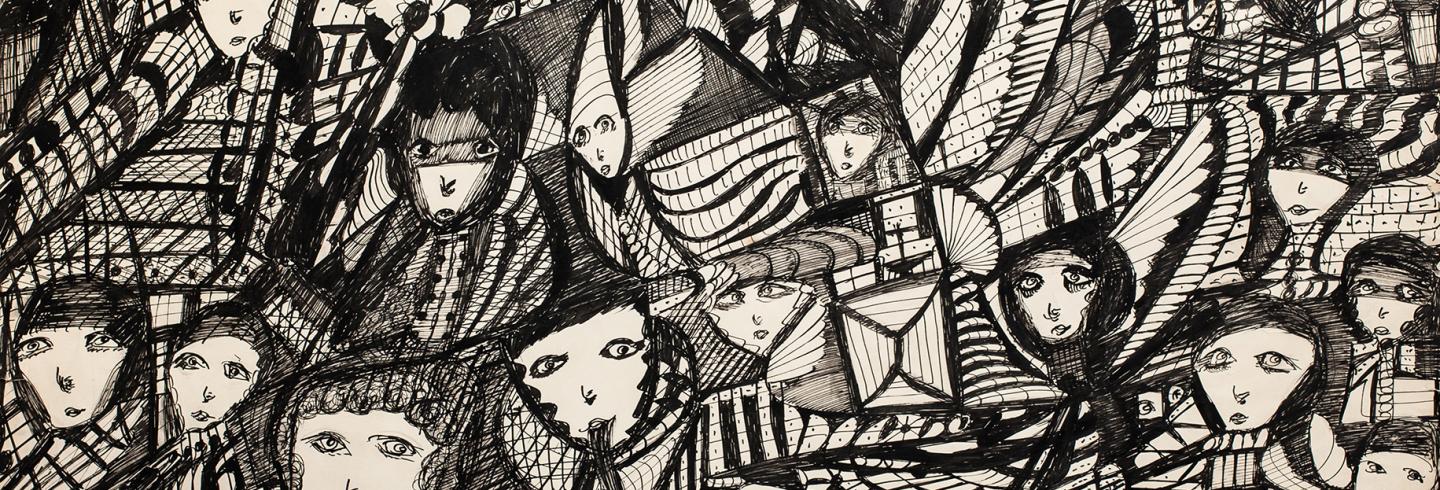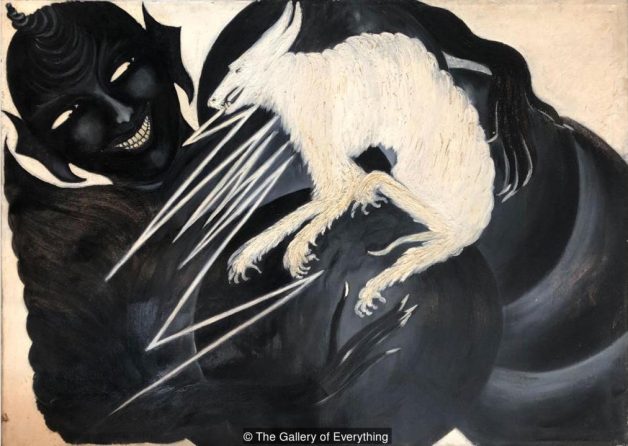The Medium’s Medium
A pair of new exhibitions looks at how Spiritualism influenced modern art, and how its followers believed they could contact the dead, writes Kelly Grovier.
Every age invents the language that it needs. Posterity will determine what it says about our own era that we have felt compelled to craft such words and phrases as ‘defriended’, ‘photobomb’, ‘flash mob’, ‘happy slapping’ and ‘selfie’. When our forebears in the 1850s found themselves at a loss for a term to describe the new cultural phenomenon of holding seances to summon souls from the great beyond, it was a little-known writer, John Dix, who recorded the emergence of a fresh coinage: “Every two or three years,” Dix wrote in 1853, “the Americans have a paroxysm of humbug … at the present time it is Spiritual-ism”.
According to the Oxford English Dictionary, Dix’s comment is the first published use of the word ‘Spiritualism’, in the sense of channelling voices and visions from an invisible realm. Despite Dix’s suggestion that Spiritualism was likely a fleeting fad (“a paroxysm of humbug”), the modern psyche had well and truly been bitten by the bug. Before long, the existence of spirits with whom it was possible to communicate in the here-and-now was being passionately investigated as plausible by everyone from the leading evolutionary scientist Alfred Russel Wallace (who was eventually convinced) to the celebrated novelist and champion of empirical deduction, Arthur Conan Doyle (who needed little persuading).
Thunder and lightning, c 1938, by Marian Spore Bush (Credit: The Gallery of Everything)
Over the course of the ensuing century, Spiritualism blossomed into a formidable force that shaped countless milestones of cultural expression: from the ‘automatic writings’ of the Irish poet William Butler Yeats to the so-called ‘New Music’ of the avant-garde US-Austrian composer Arnold Schoenberg. In the visual arts, the spiritualist dimensions of certain painters is well established. Piet Mondrian once confessed that he “got everything” from the occultist writings of Madame Helena Blavatsky, founder of the mystical Theosophical Society, and Wassily Kandinsky published the seminal aesthetic treatise Concerning the Spiritual in Art in 1911.
Modern life is spiritual
It is the aim of a pair of new exhibitions, however, to reveal an even more profound and pervasive influence of Spiritualism on artistic consciousness than has previously been appreciated. “At the turn of the century,” says James Brett, founder of The Museum of Everything in London and curator of The Medium’s Medium, “modern artists and modernists were all into versions of spiritualism, all of them – architects, designers, artists – were touching it, looking at it. So spiritual art had a huge impact on what became modernism and therefore art today.”
Blake is probably the spiritual godfather of much of this material – James Brett
The parallel displays – held concurrently at the museum and its booth at Frieze Masters art fair – feature paintings and drawings by more than three dozen artists working in the closing years of the 19th Century and in the first half of the 20th. Among the most alluring of the works on show is a mysterious watercolour by the Swedish artist Hilma af Klint, who created in secret an enormous body of abstract paintings beginning in 1906 – several years before her more celebrated male contemporaries (including Mondrian and Kandinsky) had started to experiment with non-figurative compositions. A believer in the spirit world and a regular attendee of seances, Af Klint associated herself with de Fem (or The Five), a group of like-minded female artists committed to transcribing the universal truths they believed were communicated to them by spirits through a psychograph.
See full article @ BBC how spiritualism influenced modern art


